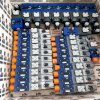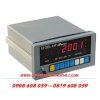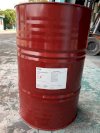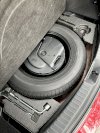The Korean-made SUV's stock has risen recently thanks to the relentless march to credibility and competitiveness wrought by major players Hyundai and Kia. Doubtless SsangYong is hoping that some of that appeal will reflect well on its own products while it plays catch-up in a crowded market place, and this, the new Korando, is set to play a significant part in proving whether or not the firm has what it takes to meet the opposition head-on.
The all-new Korando is the first monocoque vehicle that the Korean company has ever produced and represents the first steps in a re-launch that is intended to make the brand more competitive against both its home-market rivals and the major budget European makers.
The Korando is a significant step forward for the Korean firm. It benefits from an impressively generic exterior that could, at a push and a distance, be mistaken for something that carries a little more kudos in the cut-throat mid-size SUV market. At a passing glance it might even be mistaken for a Ford Kuga. It would have to be a quick glance, though.
A 173bhp 2.0-litre turbodiesel motor, developed by the company independently, is the only motor available in the Korando. A six-speed auto and all-wheel drive is on offer, but we’re testing the entry-level two-wheel drive model.
Power delivery is very peaky and unrefined - significantly more so than is now usual in modern turbodiesels - with all of the 266lb ft of torque arriving between 2000-3000rpm. The effect of this is amplified by awkwardly spaced gear ratios. Second is very short, but changing up into third leaves the engine floundering beneath its limited power range.
So powertrains are not something that SsangYong can yet claim to have reached current European standards in, but ride quality is well judged - a little bouncy occasionally but nothing you wouldn’t expect of a softly sprung compact SUV, and body roll is also kept in check.
Steering is entirely sterile and has a disconcerting elasticity around the dead-ahead, but it is linear enough in response. Passenger space is also very competitive, particularly for those in the back, though luggage capacity of 486 litres is some way behind class best.
In many respects the Korando is rather bland, but by any standards it is a significant step forward for its maker. However, given the strides that SsangYong’s domestic rivals Kia and Hyundai have made with the Sportage and ix35 respectively, it becomes hard to objectively recommend this otherwise commendable effort. The Korando is not a bad car in isolation, but one that feels as if it has only just reached the levels achieved by most of the obvious rivals one generation ago.
So SsangYong’s competition need not worry too much right now, but if the company can make the same level of progress with its next generation then there is every possibility it - and the Korando - could become a serious contender.





































